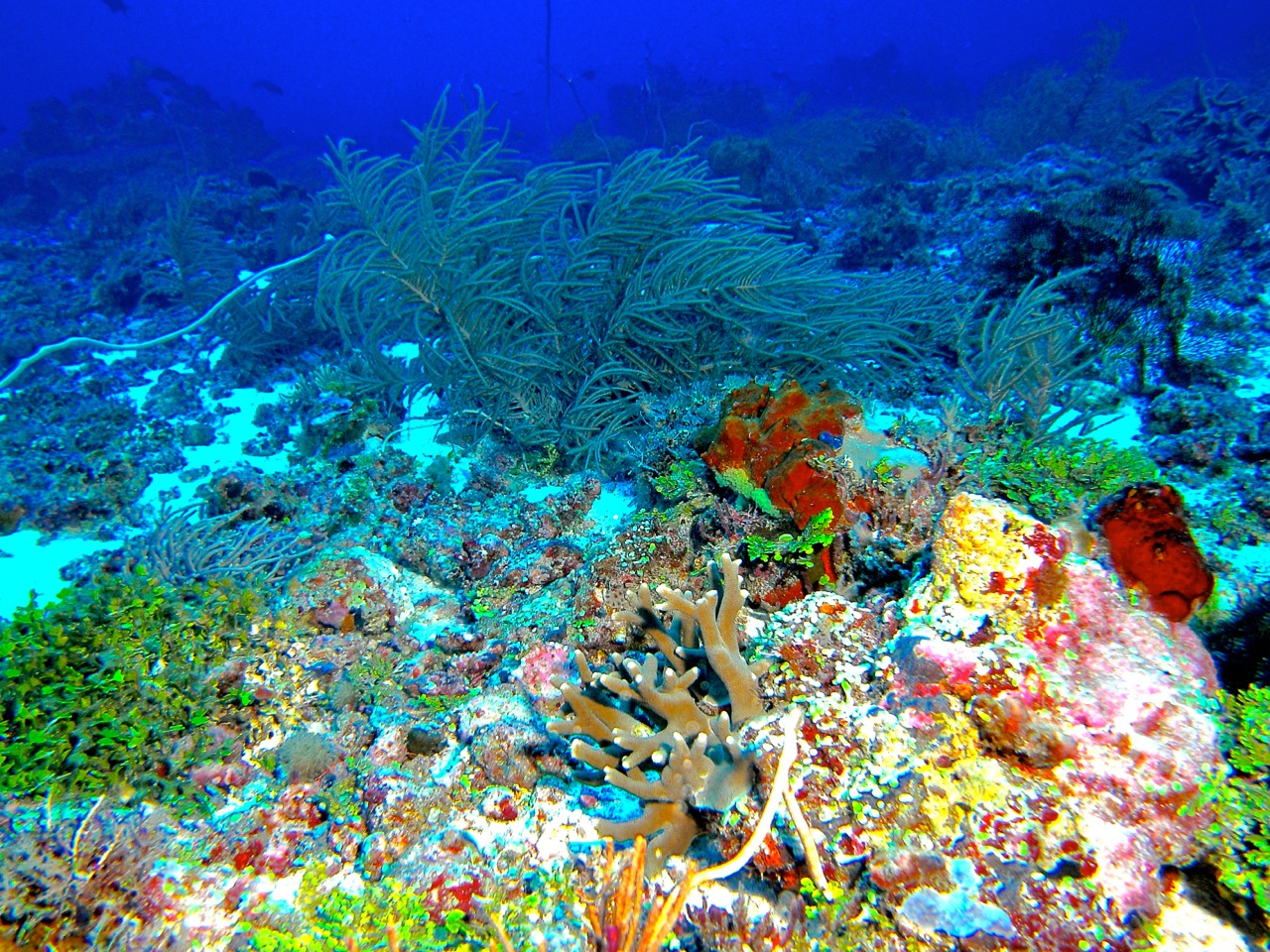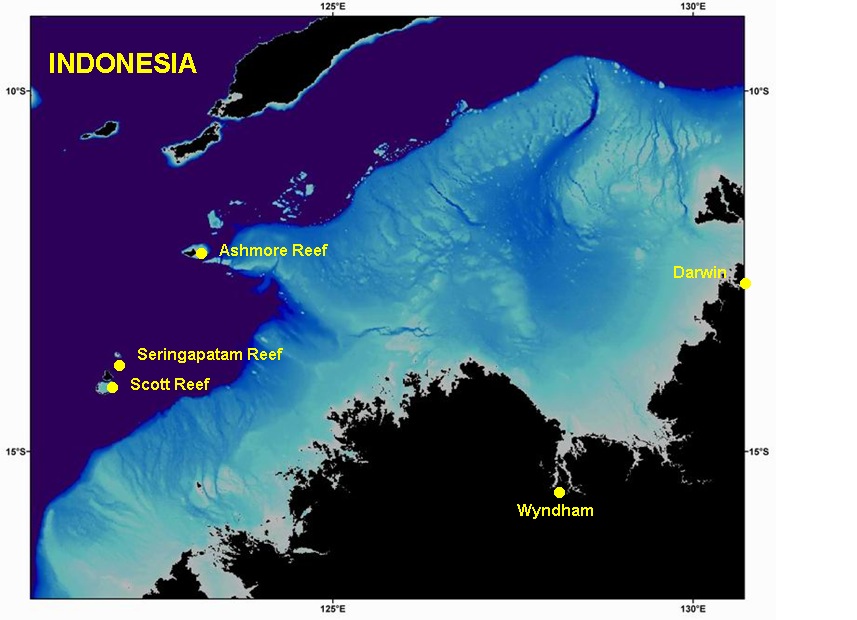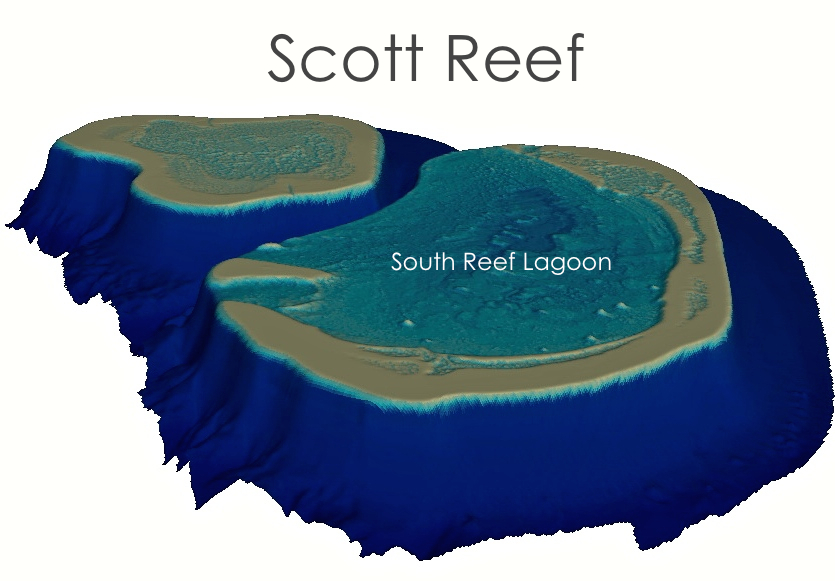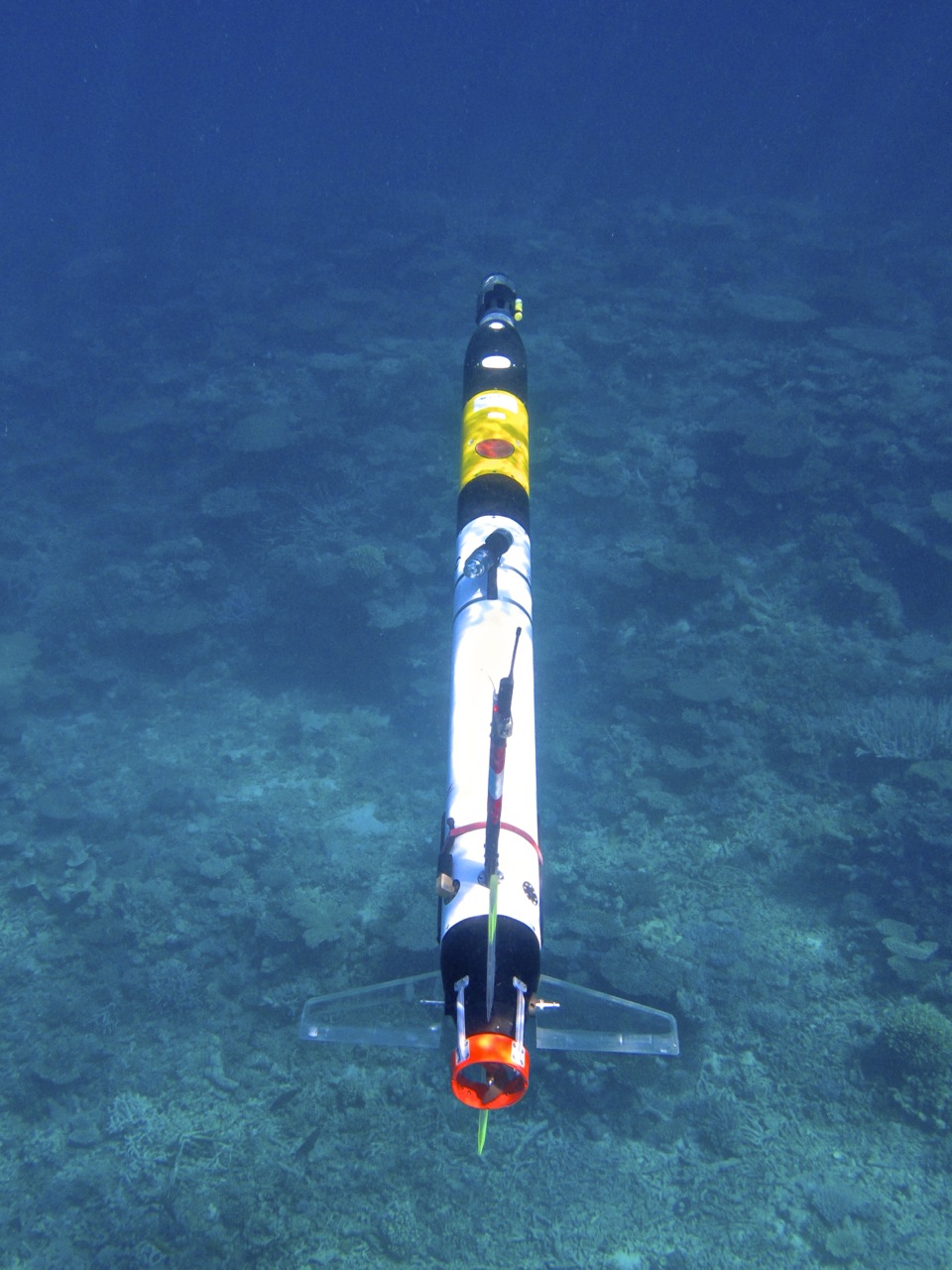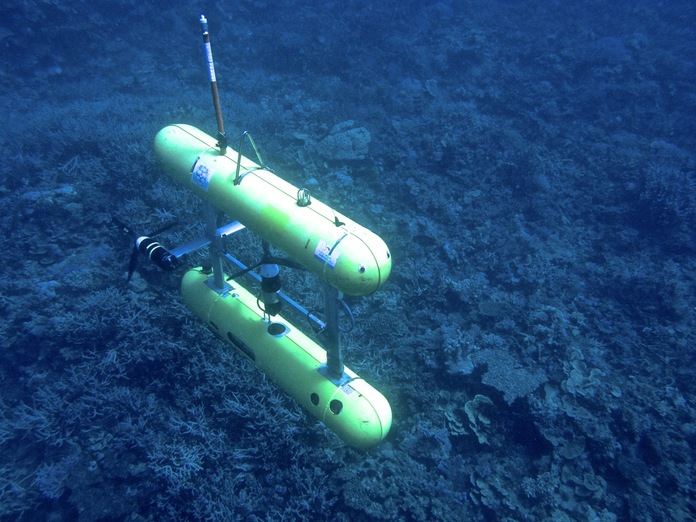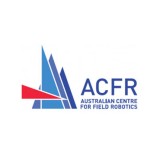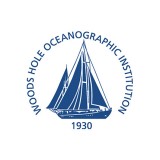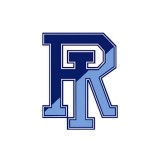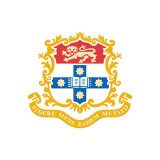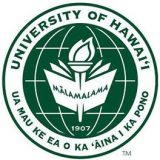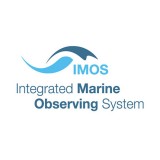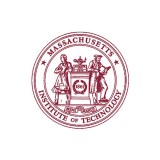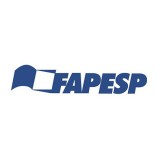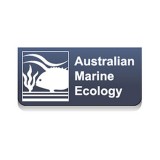At the end of March, Falkor will cruise north from Australia to a spectacular, isolated, coral wonder known as Scott Reef—but biology will not be the primary concern.
While most expeditions are designed to explore a specific area or oceanographic question, this research focuses more directly on pushing oceanographic technology forward. The goal will be to expand and improve techniques and algorithms for efficiently coordinating deployments of multiple exploratory vehicles and tools. The work will bring engineers closer to being able to leave groups of robotic vehicles untended for long stretches to accomplish tasks like detailed seafloor mapping and chemical analyses across wide areas. Such capabilities would dramatically improve ocean exploration and research by increasing observations while reducing costs.
Dr. Oscar Pizarro, an oceanographic robotics researcher from the Australian Centre for Field Robotics at the University of Sydney, will lead the expedition, which runs from March 24th to April 6th. Other team members will come from the Woods Hole Oceanographic Institution, the University of Rhode Island, the University of Sydney, the University of Hawaii at Manoa, theUniversity of Michigan, and James Cook University.
The group will be launching an arsenal of different tools that will use Scott Reef as a test site for experiments with coordinated groups of vehicles capable of optical and acoustic mapping, chemical and current analyses, and other functions. This will be in stark contrast to a typical expedition where opportunities for engineering experimentation and testing are rare—typically limited to only what is required to accomplish science objectives. “The luxury of just doing stuff in the real world without putting somebody’s science program at risk is rare,” says Pizarro, “When and how the tools get developed are problems that aren’t really built into the way we use our vessels.”
The Targets
Scott Reef is extremely remote—some 400 kilometers north from Broome in the Timor Sea and about halfway to Indonesia. But it offers expansive coral habitats, and its south end includes a large lagoon that offers partial protection from surrounding seas, potentially simplifying activities. The group plans to conduct work initially in the lagoon then, if conditions are favorable, move to sites to the northeast where deeper reef shoals will offer the chance to apply emerging techniques on unexplored areas.
The overall goal will be to run a series of deployment experiments aimed at testing and refining algorithms that will, with minimal human input, identify targets of interest and program the coordinated activities of multiple vehicles to accomplish set goals.One will be a detailed habitat mapping exercise, followed by a simulated mission to map a large area with sparse coral habitats and identify spots of potential interest—all automatically. A demonstration experiment will also focus on mapping currents and water chemistry, with results compared against data collected from Falkor for verification.
The Tools
One of the primary tools will be autonomous underwater vehicles (AUVs). While AUVs are now commonly used, expeditions are typically built around large, elaborate AUVs such as Sentry, which Schmidt Ocean Institute used on the recent Loihi Seamount expedition with great success.
But elaborate AUVs are expensive to operate, requiring a dedicated operations team and a support ship relatively close. For this project, the group will instead use several smaller, less expensive AUVs that, while having fewer individual capabilities, collectively offer a wide range of options including sonar, photography, and chemical sensing.
AUVs can cover a great deal of territory, but there are always tradeoffs. Taking high-resolution images of habitat, for instance, can be time and battery-intensive work, limiting the area that can be covered. For this reason, initial mapping work, which can be performed by AUVs themselves, is critical for guiding more detailed camera or other work. The more automated the selection and mission programming becomes, the more efficiently and effectively research can be accomplished.
In conjunction with the AUVs, the team will launch a suite of other tools and vehicles to further expand their electronic view of the seafloor and overlying waters. Among these are photo-floats, which are drifters that can take photos and collect water column measurements at various depths, or that can be programmed to drift a certain distance above the seafloor. Because they are simpler to operate, less expensive, and typically longer running than AUVs they may eventually be used in large numbers. A similar tool the researchers plan to deploy is called the Webb glider, which uses changes in buoyancy to propel itself while collecting chemical data.
As data come in during various test runs, the team will put together a preliminary model of the area—its currents and habitats. They’ll work first at the relatively well described Scott Reef, then move on to less charted areas to further test and refine their techniques.
The Full Vision
The team’s ultimate vision is to be able to deploy complementary groups of vehicles to accomplish key tasks, guided by algorithms that coordinate the vehicles to a degree that would allow a ship to move to another area for separate work.
During the expedition the team will be working toward that goal by also trialing autonomous surface vehicles (ASVs). These come in various forms including some that look like small catamarans and use solar power, and lower profile vehicles with middle joints that rise and fall with wave action, harnessing power in the process.
ASVs can perform two critical functions in the grand scheme of what’s referred to as robotic force multiplication. First, they can map exact positions of underwater assets, where GPS signals can’t travel. Over time an AUV loses track of its exact position and has to be corrected. That’s typically done from a support ship or an array of acoustic beacons, but an ASV can also do the job.
Second, ASVs can relay data to a support ship, including information from sensors, details about how AUVs are functioning, and alerts about any problems, all of which would allow researchers on the support ship—even far away—to plan subsequent deployments and activities as efficiently as possible.
Immediate Goals
While the team’s primary mission will be to advance their force multiplication capabilities, they will, of course, ensure that data collected is also scientifically useful. There will be a marine ecologist aboard, Thomas Bridge from James Cook University, who will help select sites and interpret optical and acoustic data to support ongoing studies in the region. The team will also coordinate with a group that will be part of a later Falkor expedition to Scott Reef to make data available as needed and to avoid redundancy.
The Long-term Payoff
Pizarro and the team hope to come away with field-proven techniques that will move them toward applying more force multiplication to various habitat studies in ways that will make them more efficient and more economical. Eventually, they expect to use the work to expand coral monitoring efforts in Australia. The country’s reef system is so extensive that regular monitoring has been difficult, particularly beyond diver depths. One of the major problems has been getting enough ship time to do the work needed. Enabling researchers to deploy vehicles to perform one mission, while moving to another area for different work could double productivity. “My interest is in trying to push that angle,” says Pizarro, “getting these tools to work together in a way that clearly shows you’re getting more out of ship time than with traditional techniques.”
by Mark Schrope
Data & Publications
The resulting shipboard dataset is being stored at the Rolling Deck to Repository and is now available.
The SeafloorExplore app allows the public to view scientific visual data from underwater robotic vehicles. SeafloorExplore displays never before seen 3D models from the bottom of the oceans and is now available for download in the iTunes App store. To view the dataset from Scott Reef that was collected during this cruise simply download the app. Once open click on the information (i) icon in the bottom right corner. Select download new models and then select Schmidt Ocean Institute Falkor cruise to download the Scott Reef data set.
Acoustic Backscatter, Swath Bathymetry, AUV Sirius Navigation, and Falkor Navigation data are available through the Marine Geoscience Data System.
Images and the respective metadata and dive report collected at Scotts Reef using AUV Sirius is now available at the Integrated Marine Observing System viewer portal.
[To view the AUV images, from the drop down menu that says Choose an AUV Track, select ScottReef201503 to view data and imagery from any of the 19 tracks OR click on the AUV icon off the northwestern most coast of Australia in the map].
- Final Cruise Report: Coordinated Robotics
- Pizarro, O. (2019). Autonomous Benthic Monitoring in Australia. Invited Presentation at Norwegian University of Science and Technology (NTNU), Trondheim, Norway.
- Pizarro, O. (2019). Autonomous Benthic Monitoring in Australia. Invited Speaker at University of Porto, Port, Portugal.
- Pizarro, O. (2019). Benthic Imaging and Mapping Assisted by Autonomous Machines. Oral Presentation at Marine Imaging Workshop, Victoria, British Columbia, Canada.
- Pizarro, O. (2019). Field Trials of Multi-vehicle Adaptive Robotic Surveys for Seafloor Mapping and Characterization. Oral Presentation at Geohab Conference, St. Petersburg, Russia.
- Williams, S. (2019). Challenges in Deploying Robust Autonomy for Robotic Exploration in Marine Environments. Oral Presentation at International Conference on Robotics and Systems' Workshop on Informed Scientific Sampling in Large-scale Outdoor Environments, Macau, China.
- Williams, S. (2019). Challenges in Deploying Robust Autonomy for Robotic Exploration in Marine Environments. Oral Presentation at Pacific International Maritime Conference, Sydney, Australia.
- Williams, S. (2019). High-resolution Imaging in Marine Habitats Using Autonomous Underwater Vehicles. Oral Presentation at Building Transparent Global Oceans Community Workshop, Qingdao, China.
- Williams, S. (2019). Marine Surveillance and Undersea Autonomy. Oral Presentation at Defence Innovation Network Workshop on Marine Surveillance and Undersea Autonomy, Wollongong, Australia.
In the News
Diving Robots Coordinate to Explore Ocean Depths
Machine Design • June 8th, 2015
On This Sea Cruise, Drones Train to Be the Underwater Explorers of the Future
Popular Mechanics • May 22nd, 2015
Meet the Underwater Drones That Will Explore the Ocean Deep
Popular Mechanics • May 22nd, 2015
Coordinated Underwater Robotics
All Things Marine Radio Show • April 21st, 2015
Data gathering expedition using coordinated groups of underwater robotics
Phys.org • March 18th, 2015
